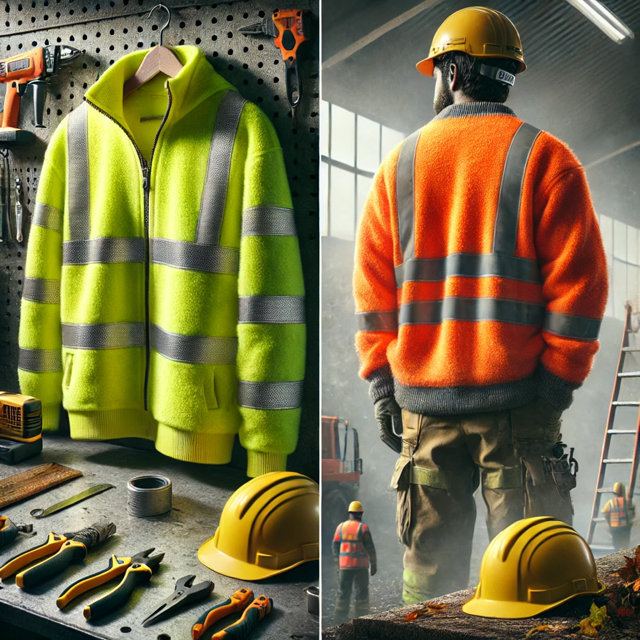
How to Layer High-Visibility Winter Workwear for Maximum Warmth and Safety in 2025
Staying visible and warm in hazardous winter conditions requires more than just a hi-vis jacket. Proper layering of high-visibility winter workwear ensures not only thermal comfort, but also full compliance with safety standards in European workplaces. Whether you’re part of a municipal snow crew, a road construction team, or a logistics operator, building the right outfit from base layer to outer shell is key. At OptimumBHP.pl, you can find complete systems including hi-vis jackets, insulated trousers, thermal gloves, and more. Brands like Portwest, Snickers Workwear, CXS Canis, and Sara Workwear offer tested solutions tailored for winter hazards. For guidance on gear selection, visit our blog and FAQ on high-visibility clothing. Let’s break down how to layer smartly in 2025.
Check out our other blog posts:
Are S3 Winter Work Boots with Metal-Free Protection the Future of Cold-Weather PPE in Europe?
Best Winter Work Jackets for Municipal Snow Crews 2025: What to Wear When the Temperature Drops
How to Choose Premium Insulated Workwear for Winter 2025 – Expert Advice from Optimum BHP
Which Flame-Resistant Work Jackets Offer the Best Cold Protection in Winter 2025?
How to Choose the Best Thermal Base Layers for Winter Workwear: A Complete Guide
How to Choose the Best Flame-Resistant Winter Workwear for Harsh Conditions: The 2025 Guide
⸻
Base Layers: The First Line of Thermal Defense
Start your layering system with a breathable, moisture-wicking base layer. These garments keep sweat away from your skin, preventing rapid cooling during breaks or changes in activity level. Choose flame-retardant models when required, such as those used under multi-norm jackets or winter hi-vis outerwear. A good base layer should stretch with the body and fit snugly to preserve warmth. Avoid cotton, which retains moisture and leads to discomfort in freezing temperatures. Consider thermal long-sleeve shirts with anti-static properties for work near electrical equipment. These layers form the invisible but essential foundation of a safe winter work uniform.
⸻
Mid Layers: Retaining Heat Without the Bulk
The mid layer serves to trap body heat while allowing for freedom of movement. Fleece jackets or padded hi-vis sweatshirts with EN ISO 20471 certification offer both insulation and visibility. For workers in colder zones, the Snickers 8134 quilted hi-vis jacket can serve as a mid-layer or standalone piece. Look for designs with high collars, elastic cuffs, and zippered pockets for better thermal regulation. Portwest also offers hi-vis fleece layers designed for both warmth and durability. Choose mid layers that compress easily to fit under outer shells without restricting motion. With the right insulation, your core stays warm while your uniform remains flexible.
⸻
Outer Layers: Maximum Protection and Visibility
Your final layer must block wind, repel water, and provide high visibility in low-light conditions. The Portwest S466 Traffic Jacket is a reliable option for municipal teams working in heavy snow or rain. For versatility, consider a 5-in-1 model like Portwest S766, which adapts to changing temperatures. The Snickers 1130 AllroundWork Jacket adds climate control and stretch-fit panels for ergonomic performance. Hi-vis outerwear should be certified to EN 343 for waterproofing and EN ISO 20471 for reflectivity. Look for sealed seams, storm flaps, and detachable hoods for full coverage. Reinforced elbows and shoulders improve durability in harsh tasks like snow shoveling or salt spreading. The outer layer defines your compliance, so invest wisely.
⸻
Advanced Technologies in Hi-Vis Winter Workwear: What’s New in 2025?
In 2025, advanced materials are reshaping how hi-vis winter workwear performs in cold climates. Portwest’s DX4 4-in-1 Jacket DX466 integrates ergonomic design, breathable insulation, and waterproof membranes into a single solution. Snickers Workwear’s AllroundWork 1830 Parka features Cordura reinforcements and climate-control linings that adapt to changing activity levels. These technologies reduce the bulk traditionally associated with winter gear while improving durability. Moreover, high-visibility garments are now tested for resistance to cold-induced stiffness, improving long-shift comfort. Thermal linings use hollow-core fibers or reflective coatings to trap body heat without restricting movement. Workers benefit from cutting-edge protection without sacrificing mobility or legal compliance.
⸻
The Role of Multi-Norm Compliance in Winter Layering Systems
In high-risk environments, layering must go beyond warmth and visibility—it must also meet multi-norm compliance. Portwest’s FR79 Bizflame Rain Jacket offers flame resistance, anti-static properties, and waterproofing, all in a high-visibility design. Snickers 1163 ProtecWork Jacket achieves similar certification levels while adding insulation for sub-zero performance. These garments are ideal for utilities, energy sector workers, or road crews near live electrical systems. When building a compliant winter uniform, combine such outer layers with flame-resistant base layers and hi-vis trousers. Multi-norm options minimize the need for swapping gear between jobs or locations. Safety managers benefit from simplified procurement and guaranteed conformity across tasks.
⸻
Summary: How to Layer High-Visibility Winter Workwear for Maximum Warmth and Safety in 2025
Effective layering of hi-vis winter workwear is more than just combining jackets and trousers —it’s a strategic approach to protection, comfort, and compliance. Start with moisture-wicking base layers, add thermal insulation with fleeces or sweatshirts, and top it off with weatherproof hi-vis outerwear. Accessories like gloves, caps, and multi-functional trousers complete the system. Explore professional options from Portwest, Snickers Workwear, CXS Canis to build your ideal setup. Whether you’re working on snowplows, railways, or power grids—intelligent layering keeps you safer, warmer, and more efficient. Visit the Optimum BHP blog and FAQ section for expert recommendations tailored to winter challenges.

